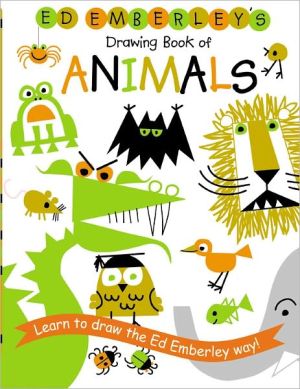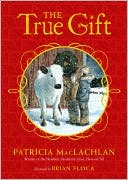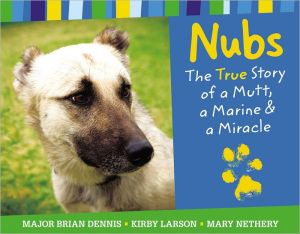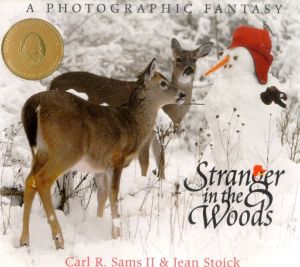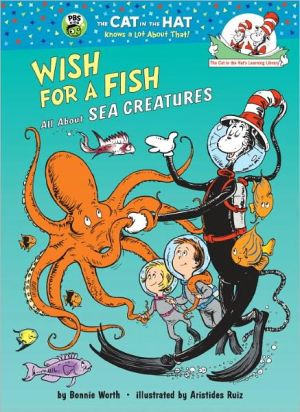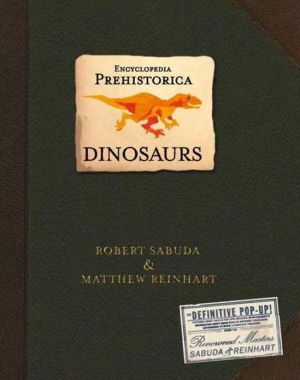Water Hole
Graeme Base is back -- with an exciting and fun counting book! Children will love counting from one to 10 as animals of the world gather around a water hole. As one rhino gives way to two tigers, then three toucans, on up to 10 kangaroos, die-cut pages reveal the water hole in 10 different worldwide habitats, from African plains to Himalayan mountains to the Australian outback. But the water hole keeps shrinking, and with it the number of frolicking frogs. Can anything bring back the water...
Search in google:
In the tradition of his best-selling alphabet book, Animalia, author and illustrator Graeme Base takes young readers on an exhilarating journey of discovery with an ingenious fusion of counting book, puzzle book, storybook, and art book. From the plains of Africa and the jungles of the Amazon to the woodlands of North America and the deserts of outback Australia, the animals come together to drink from the water hole. But their water supply is diminishing. What's going on? Each sumptuous landscape illustration conceals hidden animal pictures for readers to find as they count the animals that visit the water hole and try to solve the mystery: will the animals come back or is their water source gone forever?Publishers WeeklySuccessive spreads introduce a growing number of animals at a water hole that, as viewed through die-cut ovals, becomes smaller with each turn of the page. "Readers will find more to see the longer they linger over these enticing pages," wrote PW. Ages 4-up. (Oct.) Copyright 2004 Reed Business Information.
\ From Barnes & NobleThe Barnes & Noble Review\ From the genius behind the bestselling Animalia comes another gorgeous celebration of the wildlife of planet Earth. Combining Graeme Base's outstanding illustrating skill, a simple math lesson, and a subtle message about the circle of life, The Water Hole is a true work of art. \ The story line focuses on the residents of a water hole in every habitat, starting with one rhino in Africa and continuing with two tigers in India, three toucans in South America, and so on. All drink from their respective water holes. But something is happening -- the water hole is getting smaller. By the time the reader reaches the ten kangaroos in Australia, the water is gone, and the animals disappear. It is only when the next rain falls that the animals can return. And that they do, in a spectacular final scene.\ Bases's illustrations are lush, to say the least. The gorgeous colors of nature, from the striped tiger to the quirky catfish, are energetic and true to life, which makes the the disappearance of the animals, leaving a grey and barren world, that much more intense. And no one can make as big a statement with a single drop of water as can Graeme Base. That single drop takes up the bulk of the page and in one quick instance captures the wonder of nature.\ Young readers, and adults as well, will relish the detail and joy of this phenomenal book. It's a perfect companion to Animalia and a wonderful addition to anyone's bookshelf. (Amy Barkat)\ \ \ \ \ \ Publishers WeeklyReaders will find more to see the longer they linger over the enticing pages of Base's (Animalia) latest innovative effort. Successive spreads introduce a growing number of animals (from one rhino to 10 kangaroos) at a water hole which, as viewed through die-cut ovals of progressively decreasing size, becomes smaller with each turn of the page. Though the minimal, somewhat quirky text makes no reference to the locale depicted in each mixed-media painting, images in the background of the various landscapes help pinpoint the country or continent in focus (e.g., Mount Rushmore is visible through the trees that flank five North American moose lapping up water and the Great Wall of China looms behind seven thirsty pandas). Borders at the top and bottom of each spread feature silhouettes of 10 animals indigenous to the spotlighted locale. In the accompanying illustration, Base cleverly conceals renderings of these creatures, subtly working them into the vegetation and sometimes into the remarkably lifelike images of the featured animals themselves. Keeping these creatures company and adding a dose of whimsy to the visuals is a cast of diminutive frogs, bedecked in pearls, knit caps and shirts. Though the animals disappear when the water hole dries up, rain eventually falls and the earth springs back to life. Base's final panorama reveals all the species gathered peacefully at one much larger water hole, bringing his story to a hopeful close. Ages 4-8. (Oct.) Copyright 2001 Cahners Business Information.\ \ \ Publishers WeeklySuccessive spreads introduce a growing number of animals at a water hole that, as viewed through die-cut ovals, becomes smaller with each turn of the page. "Readers will find more to see the longer they linger over these enticing pages," wrote PW. Ages 4-up. (Oct.) Copyright 2004 Reed Business Information.\ \ \ \ \ Children's LiteratureCounting animals from one to ten, various habitats are featured as the menagerie comes to the watering hole. The watering hole gradually disappears and all of the animals with it. Then a single drop of water falls; it rains and rains and all the animals come back. World-renowned artist/author Graeme Base illustrates animals from seven continents. Three toucans represent South America; one rhino from Africa; seven pandas from China. Careful observation reveals the many other creatures from the featured environment that are included in each illustration. For comic relief, a few frogs in party hats and vests are hidden as well. Each spread is bordered with silhouettes of other animals from that geographical region. The gimmick is the elliptical hole on each page in the illustration of the watering hole. It gradually decreases in size, eventually disappearing. Is this a warning of what may come to pass? Very bright and colorful illustrations demonstrate an attention to detail. 2001, Harry N. Abrams, $18.95. Ages 3 to 8. Reviewer: Kristin Harris\ \ \ \ \ School Library JournalGr 3 Up-Come to the water hole and immerse yourself in an extravagant experience. The offering from a master of visual delight is at once a counting book, a zoological tour, and a fascinating hidden-picture challenge. As 10 different animals from 10 different countries come to quench their thirst, a metaphorical water hole diminishes until it dries up completely and the visitors leave. Then the cycle begins again with a single drop of water, a torrent of rain, and a luxuriant new watering hole that draws all of the creatures back again. With a quarter page of simple counting text and three-quarters page of sumptuous watercolor and gouache, the story unfolds on many levels. The water hole itself is a concentric cutout oval that shrinks from page to page. There are silhouettes in the borders of the creatures indigenous to each country and those same animals are hidden in the dense background. A comic note is added with 10 frogs, some wearing clothes, whose numbers also decrease as the water dries up. While some children may miss the illustrative subtleties indicating that each water hole is actually in a different part of the world, this numerical and ecological companion to Animalia (Abrams, 1987) is a visual treat.-Beth Tegart, Oneida City Schools, NY Copyright 2001 Cahners Business Information.\ \ \ \ \ Child MagazineA Child Magazine Best Book of 2001 Pick \ One rhino, two tigers, and so on gather at a water hole that dwindles away with the turn of each page -- until renewed by a refreshing rain. Part counting book, part visual puzzle, part gentle environmental plea, this lush companion to Base's bestselling Animalia offers elaborately detailed vistas of diverse habitats and wildlife.\ \ \ \ \ \ Kirkus ReviewsAfter the comic futuristic chronicle The Worst Band in the Universe (1999), Base returns to his Animalia (1987) roots. In big, natural scenes teeming with realistic detail, animals gather in increasing numbers around a waterhole that not only shifts from continent to continent with each turn of the page, but shrinks too, until "Ten Kangaroos" find only a dusty pit. Along with a superfluous die-cut hole, the artist adds a similarly shrinking crew of increasingly concerned-looking tropical frogs-some clad in bathing suits or pearls-to each spread, plus animal forms concealed within patterns of bark, rock, and foliage for the sharp of eye to pick out. It all makes an absorbing visual feast, and the ominous ecological theme is optimistically capped by a rainfall that restores the waterhole, bringing back many of the animals for a grand finale. This eye-filling, not altogether earnest counting book/consciousness-raiser will draw an unusually wide, and wide-eyed, audience. (Picture book. 4-9)\ \

